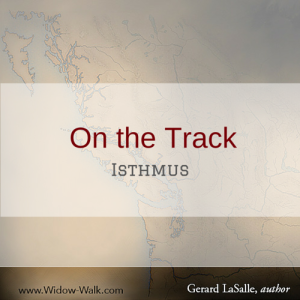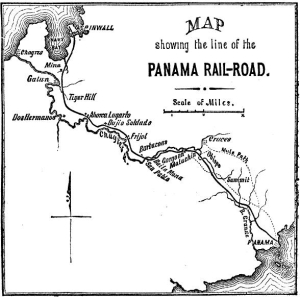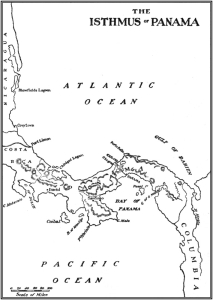On the Track – Isthmus
 In Isthmus, set to premier in December, we will be reintroduced to many of the characters from Widow Walk. This brief introduction from Part One:
In Isthmus, set to premier in December, we will be reintroduced to many of the characters from Widow Walk. This brief introduction from Part One:
“Gold and silver, the coveted, malleable metals that glistered the ceilings and gilded the columns of the palaces of the ruling classes of the Western world and lined the chalices elevated over the altars of their cathedrals, was also used to pay for a seemingly endless series of wars—including European Christendom’s diplomatic and military efforts to prevent Islam from sweeping across Europe. Powerful families and monarchies relied on gold and silver as the universal currencies for their international and internecine conflicts to secure their hegemony, property, and wealth.
Thus, with the discovery of abundant sources of both precious metals in Peru, Mexico, and Central America the Panamanian isthmus achieved immense importance to the Western world.
The early pathways across the isthmus were not convenient, however. Trekking the Spanish Camino Real, a four-foot wide, seventy-mile trail from Las Cruces to the Caribbean ports of Portobelo and Nombre de Dios, was perilous because of terrain, banditry, and disease. Travel to Panama City via the Chagres River and the Real Las Cruces promised the traveler a high probability of illness and death over the ten arduous days it took to traverse it. Navigating around the South American Horn took forty-seven uncomfortable days.

Panama Rail Road
Source:Panamarailroad.org
It wasn’t until 1855, when officials of the American Panama Railroad Company drove the final spike in their trans-isthmus railroad, that a truly efficient means of transport for cargo and passengers was established. On that day, all other routes, including the Camino Real, ship travel across Lake Nicaragua, and circumnavigation around South America, became comparatively more expensive and impractical. The oceanic transport efficiency afforded by a convenient cross-Caribbean route rather than one from the tip of South America favored trade with the rapidly emerging trade centers of the southern and eastern United States, and with it the dominance of the world’s economy by that nation.
Profits from passenger and freight transport returned the seven million dollar investment to those who financed the railroad in less than one first year.
Many men died constructing the railway. Many men died protecting it.”
Isthmus is book II of the Widow Walk Saga.
